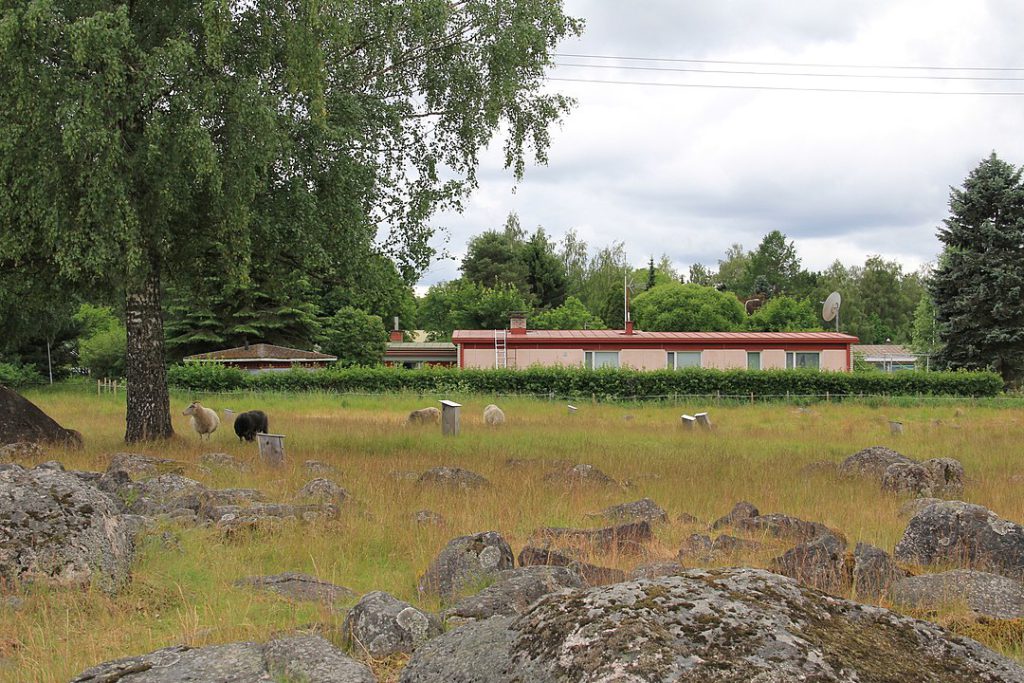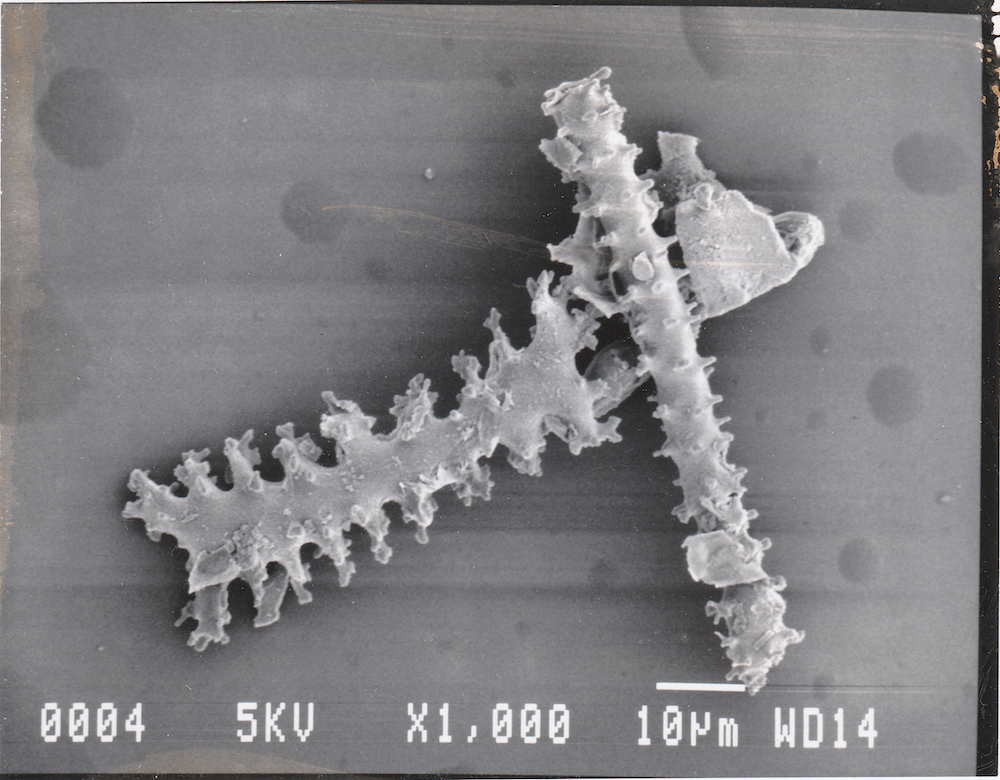Do I Have Microremains in My Teeth?
Southwestern Finland isn’t a great place for archaeologists to find anything other than the sturdiest of remains. The pine needles that fall to the boreal forest floor make the soils acidic, eating up whatever might be buried in them. And the freezing cold winters, combined with the spring thaws, make artifacts crumble quickly over time.
So, when doctoral student Tytti Juhola and archaeologist Amanda Henry set out to explore what life was like for the people who had lived in the region during the Iron Age around A.D. 600–1200, they decided to look in an unexpected place: between the teeth of the people buried in Luistari cemetery.
Archaeological evidence isn’t just made up of ceramic pots, tools, bones, or crumbling architecture—some of it is much, much smaller. “Microremains” are just starting to be recognized as important tiny pieces of the archaeological puzzle that can help scientists reconstruct the way people lived in the past.
The spaces between human teeth are a particularly bountiful source of microremains. Particles of the things we put in our mouths tend to stick in the plaque that accumulates on our teeth. (One of the many reasons that dentists implore us to brush and floss.) Eventually, that plaque can harden into a material called dental calculus, trapping tiny records of a person’s diet, whatever medicines they may have taken, and even how they used their teeth as tools. The study of dental calculus, and the tiny clues trapped within it, is a relatively new field, but it has already been applied to many intriguing archaeological questions, like that of the contents of the Neanderthal diet.
Luistari cemetery was excavated between 1968 and 1992, leaving a readily accessible collection of human remains to study. (In Europe, compared to other parts of the world, the excavation of human remains is rarely considered problematic.) The team took a close look at 32 samples of dental calculus from those remains, along with a handful of sediment samples that had been classified during the original excavations as either “unidentified organic matter” or, more simply, “dirt.”
For Henry, an archaeologist at the University of Leiden, and Juhola, who is completing her doctoral work at the University of Helsinki, the original goal was to look for phytoliths: a kind of inorganic skeleton that plants build during their lifetime. Phytoliths form from microscopic mineral particles drawn up along with groundwater into a plant’s tissues. As these minerals are deposited in and around the plant’s cells, they make a kind of scaffold that strengthens the plant. After the plant has died and decomposed, those mineral particles can remain intact for hundreds or even thousands of years. The phytolith’s shape depends on the type of plant cells it once came from, so these tiny shapes can often be used to identify the plants that were growing in and around an archaeological site—or that someone put into their mouth.
As it happened, the duo was able to find only one phytolith, and it wasn’t anywhere near a tooth. They found it in a sample of sediment that had come from a bracelet on an individual’s arm that had been folded over where their stomach used to be. It is possible that the phytolith itself came from that person’s stomach, but the evidence was too slim to support any firm conclusions about where it came from, what it was, or what it meant. Archaeology is full of instances like this—tantalizing hints and tiny bits of information that can’t be used to draw conclusions but that can add up to important lines of evidence. So, if Juhola and Henry didn’t find the phytoliths they’d hoped for, what did they find?
These details are small, but they add texture to a picture of human lives lived long ago.
The dental calculus from the Luistari teeth included microremains of bird feathers, eggs from intestinal parasites, and animal hair fragments.
The bird feather fragments might have found their way into the mouth from a feather pillow or simply from breathing in while plucking a bird. The researchers were unable to narrow down the species of intestinal parasite from the eggs they found, but their presence indicates that there might have been some digestive troubles or health and hygiene issues among these Iron Age people. Some of the animal hairs were identified as belonging to sheep or goats. They bore no trace of dye, meaning that if these fibers came from textiles, they probably came from the initial processing stage of woolen yarns. A few deer or elk hairs may have come from the hides that were traditionally used as burial coverings in Iron Age Finland.
These details are small, but they add texture to a picture of human lives lived long ago. Perhaps some of the people buried at Luistari spent their days spinning wool. Perhaps some of them had a persistent stomachache. When these people died, those who mourned them made sure they were buried with high-quality goods, such as elk hides, woven cloth, down pillows, or the bracelet that hid the single phytolith.
I spoke with Henry about microremains, and she agreed that this developing field has a lot of potential—particularly for opening a window into what plant foods people ate. Unfortunately, Henry also noted, researchers in this developing field can sometimes make too much out of too little. One starch grain does not necessarily paint a full picture of an individual’s diet, she noted.
Postdoc Kristen Wroth at the University of Tübingen, who also studies plant microremains, walked me through some of the benefits and pitfalls of phytolith research in particular. Although these tiny plant fossils do preserve well, she noted, they’re not indestructible. And the shape of a phytolith doesn’t necessarily make it clear what kind of plant it came from: A single plant can make many different shapes of phytoliths across its different cells, and many plants within the same family look quite similar at the cellular level. Researchers can often tell whether a phytolith came from, say, a woody plant or a grass, but it can be extremely difficult to make a more specific identification.
Tiny particles found in an individual’s mouth might provide tantalizing clues about ancient life, added Wroth, but they should not stand alone as the only evidence for human behavior. They’re only small pieces of the puzzle, after all. Instead, they should complement other analyses of materials at an archaeological site. Even the dirt that archaeologists remove from a site can be a valuable source of information. A microscopic look at archaeological soils and sediments may hint at things like water flow or changes in climate.
As more dental calculus samples become available from new archaeological projects or from museum collections, the evidence hidden between human teeth will hopefully become easier to interpret. And all those unflossed teeth will be a boon for archaeology.

































